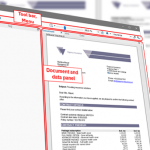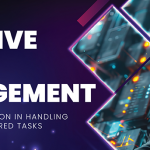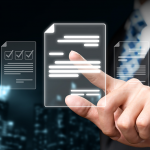2021 is the Year of Transition: Hyperautomation and low-code, no-code

The fight against the pandemic is not yet won, but with the vaccination striding ahead, businesses are starting to look forward to not only making up for losses, but tapping into new potentials while shaping the future.
One thing is sure – no one goes back to the conditions that prevailed before the pandemic – the ‘new normal’ is going to be different.
According to Gartner, top trends that will mark this year fall into three categories:
1. People Centricity
COVID-19 triggered a tremendous growth in digitization – from digital front-ends and assisted customer self-service to new forms of working and large-scale automation backed by artificial intelligence (AI), machine learning (ML) and RPA. Low touch, digital and mobile have permanently changed interactions with customers, partners and employees, creating experiences that are more remote, distributed, mobile, and virtual.
Your organization has most probably been working on multiple Digital Transformation initiatives across the board, such as expanding customer service channels and moving to Omni-channel communication or automating value delivery chains, and moving to the Cloud.
Start talking to one of our experts or request a solutions demo today.
The people centricity trends have focus on the most valuable asset – people. This includes Internet of Behaviors (IoB) to influence people’s actions, and a Total Experience (TX) strategy to improve the experience of customers, partners and employees. Here, multiple components – customer experience (CX), employee experience (EX), user experience (UX) and multiexperience (MX) – are interlinked to create superior experiences for customers and employees.
In terms of CX, it is primarily digital CX that is driving proactive customer engagement. With virtual options becoming the norm, customers have not only adopted a variety of digital communication channels, but are now using a blend of them even within a single business transaction. This poses a huge problem for organizations that still work in a siloed way – running different technologies and processes for different channels makes it really hard to respond quickly and consistently, and provide an end-to-end service to customers, regardless of where these ends might be.
That’s where the Omni-channel technology comes in. Omni-channel platforms go beyond disconnected channels and support cross-channel and cross-enterprise transactions by connecting communications running across touchpoints, channels and devices into an end-to-end conversation, and linking data to a single customer case in real time.
From an EX perspective, people must be made more connected, efficient and agile to thrive in the new virtual environment.This includes various means, such as digital collaboration, automated workflows, handoffs, and intelligent decisioning – all based on 360° information available through Web, Cloud and Mobile – from anywhere to anywhere.
- With a strong CX, the solution will resonate with customers,
- With a strong EX, employees will be more engaged and enabled
- Strong user experience (UX) will reduce effort, increase engagement and drive satisfaction, and
- MX and Omni-channel will support interactions across a variety of digital touchpoints (e.g., web, mobile apps, chatbots, augmented reality/virtual reality, wearables) using a combination of interaction modalities (e.g., touch, voice, vision, gesture) in support of performance and seamless digital user journeys.
2. Location independence
The pandemic has greatly increased the need for location independence. Many people work from home and can be located anywhere. This requires location independent services that are provided at the point of need. Trends in this category address the technology shifts that are driving secure ‘anywhere operations’ in both Business and IT.
3. Resilient delivery
If the experiences from 2020 have taught us anything, it’s that automated processes must be supported with integrated technologies that make it possible to quickly adapt to change. The COVID-19 pandemic has tested every organization’s resilience and many have failed.
Resilience = the capacity to recover quickly from difficulties/ the ability to spring back into shape; elasticity.
Resilient delivery is a huge topic that encompasses several initiatives such as hyperautomation and composable architecture, as well as other trends that focus on organizations’ ability to respond quickly to emergency and ensure speed and agility in rapidly changing business situations.
We recently highlighted Gartner’s composable architecture based on modular, adjustable components, which can be quickly pieced together, and assembled, disassembled, and recomposed into new solutions, making businesses more robust to disruptions in the future, please see here.
Hyperautomation, the next area of Resilient Delivery – involves multiple capabilities, such as Intelligent BPM and Case Management, Robotic process automation (RPA), AI, Machine Learning (ML) and low-code that can be orchestrated to work hand-in-hand in the process of business automation and optimization.
Organizations that are doing this well go even a step further and leverage smart platforms that contain all the automation capabilities directly integrated with intelligent Communication and Content Services for providing frictionless service and digitizing Business Value Streams – from request to delivery.
These leading-edge technologies and trends will play a major role in how the customers will work, buy, communicate and live in 2021 and beyond. If you want to learn more on this topic, please feel free to contact us. We look forward to talking to you!
Senior Manager Brand Marketing
Vienna, Austria






